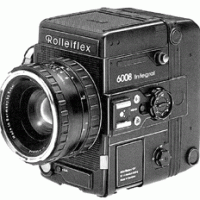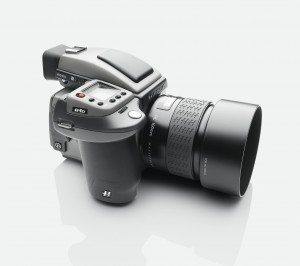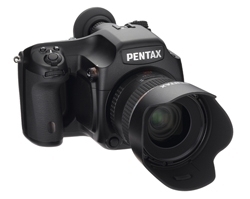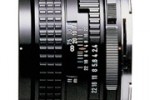
We’ve seen two entry-level medium format cameras released onto the market this week: the Pentax 645D and the Hasselblad H4D-31. Even at entry-level, we’re looking at £10,000 for the Pentax with a 55mm lens and €9995 + VAT (somewhere around £8,500) for the Hasselblad with an 80mm lens.
Do I need to remind you to breathe now? Glass of water? Tissue for your eyes? Okay. No, that’s not exactly cheap when you’re just dipping your toes in the water, but if you look at it in context of stepping up from 35mm, it isn’t quite so bad. But maybe you’re wondering what medium format is, and why it’s so special?
Are you sitting comfortably? Then I’ll begin.
Film
Way back when, in the days of dragons and film photography, there were lots of different types of film and film sizes. I could go into all the numbers, but you might die of boredom before I’d finished, and that’s not appealing, for me or for you. Film photography might’ve faded from most people’s consciousness now, but it hasn’t for quite a few photographers, including the medium format aficionados. Many of the old film sizes are no longer produced, but medium format is. It’s 120 or 220 film. It’s 6cm deep.
That means the film is almost twice as wide as film used in 35mm cameras. And this is critical: bigger film means more detail. If you’re looking to shoot high quality landscape shots, or make super-enormous enlargements of your pictures, the extra information afforded to you by the larger film size of the medium format is essential. For serious editorial work, medium format is where it’s at. In spades. (Or millimetres.)
If you want to think about this in terms of digital, the Pentax 645D has a 40 megapixel sensor; the Hasselblad H4D-31 (every time I type that I think it’s a new strain of avian influenza) a 31 megapixel sensor.
Medium format cameras comprise four essential elements: the body, the back, the viewfinder, and the lens. They’re all interchangeable. They’re the camera equivalent of Mr Potato Head.
Body
The body, unsurprisingly, is the HQ of your picture-taking. (The potato of your Mr Potato Head, if you’re keen on maintaining that analogy.) Add the relevant bits and pieces and you’re ready to go. There is, however, a slight quirk with medium format cameras: they’ll produce different image sizes depending on the camera type.
The image will always be 6cm deep, because that’s the depth of the film, but the width will vary. It might be 4.5cm, or 6cm, or 7cm. The Pentax 645 produces images 6cm × 4.5cm. You might, however, have a 6 × 6 camera, whose images will be square. If you don’t want to fuss with portrait or landscape orientation, this is mighty useful.
Naturally, you’ll get more pictures out of your roll of film if your camera takes images 4.5cm wide (15 or 16 images from a roll of 120), as opposed to 7cm wide (10 images from a roll of 120). Use 220 film and you’ll double your number of shots.
Camera back
Continuing with the interchangeable theme, the camera back can be swapped for another one. This probably doesn’t seem quite so important until you know that the film is loaded into the camera back. Change the back and you can change the film. Black and white can switch to colour, which can change to a Polaroid back if you want an instant print, and then back again to the colour film. If you don’t fancy having to rotate your camera to move from portrait to landscape (unless you’re using a 6 × 6 camera when the image is square anyway), you can buy rotating backs, too.

Hasselblad interchangeable backs
Viewfinder
The viewfinder on a medium format camera can be either eye-level, through the clever use of a prism, or waist-level. With waist-level, you get to look down onto your image with both eyes. Auto-focusing is beginning to slip into the medium format world, but otherwise you’ll use your viewfinder in conjunction with a focusing screen. Mostly, it’ll be a matte screen, but as with all things medium-format they can be changed for different purposes.
Lenses
Finally, you have lenses. I suppose for a last reference to Mr Potato Head, these would have to be the eyes. Just as with 35mm photography, you can change from a wide-angle lens to a telephoto lens, or go arty with a fish eye. And just as with 35mm photography, you should go for the best glass that you can afford. Lenses tend to span a 40-500mm range, but your focal lengths will be different in medium format than in 35mm. You’ll need to remember that. But it’s the sort of thing that you’ll learn, just as you do with 35mm.
Finally
So that’s medium format in a nutshell, with its interchangeability and astonishing picture quality. If medium format digital cameras do become more affordable, which is entirely possible, how long do you think it’ll be before they are a serious consideration for high-end amateur photographers?



